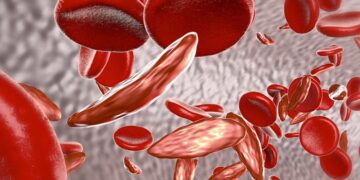March 22, 2025 Story by: Editor
A recent study conducted by researchers from Columbia Mailman School of Public Health and Rutgers School of Public Health reveals that Black women, middle-aged adults, and lower-income individuals are more likely to use personal care products with high hazard scores in the Environmental Working Group’s (EWG) Skin Deep® database. This increased usage exposes them to potentially harmful chemicals at higher rates compared to other demographics.
Published in the Journal of Exposure Science & Environmental Epidemiology, the study provides an in-depth analysis of personal care products, their chemical compositions, and the factors influencing consumer choices. The research team has been examining the potential health effects of everyday products, such as soap, shampoo, perfume, and body lotion. Their findings underscore the need for further research and increased transparency to minimize exposure to harmful ingredients and promote safer alternatives.
The researchers analyzed data from 593 adults who recorded the specific personal care products they used over a 24–48-hour period. They then evaluated these products using the Skin Deep database, which rates items on a scale from 1 (least hazardous) to 10 (most hazardous).
Key Findings:
- Black women were nearly twice as likely as white women to use hair products with high hazard scores, exposing them to endocrine-disrupting chemicals that can interfere with hormonal and reproductive health.
- Middle-aged adults (40–59 years old) had the highest overall hazard scores, primarily due to their use of anti-aging beauty products, which often contain ingredients associated with health risks.
- Younger adults (18–29 years old) preferred perfumes and colognes with the highest hazard scores. These products can contain hundreds of undisclosed chemicals categorized under vague terms such as “fragrance,” “parfum,” or “aroma.” Many of these substances, including phthalates, are known endocrine disruptors.
- Economic disparities play a significant role, as high-hazard products are more commonly found in lower-income neighborhoods, where safer alternatives are often less accessible or more expensive.
“Consumers deserve to know what is in the products they use every day, so they can take steps to reduce their exposure to harmful chemicals,” said Adana Llanos, Ph.D., associate professor of epidemiology at the Mailman School of Public Health and co-leader of the Cancer Population Science Program at the Herbert Irving Comprehensive Cancer Center at Columbia University. “Access to information is critical, but the burden shouldn’t fall entirely on individuals. Companies and regulators must take responsibility to ensure that all products on the market are safe.”
Llanos previously studied the connection between personal care products and cancer risk, finding that Black women who used darker shades of hair dye faced a higher risk of breast cancer, while white women using chemical relaxers also showed increased risk. This discovery led to a deeper investigation into the role of hair dyes, relaxers, and other beauty products in health disparities.
“Many people assume personal care products are thoroughly tested for safety, but that’s simply not the case,” noted Emily Barrett, Ph.D., professor and director of epidemiology at Rutgers School of Public Health. “Many of these chemicals have been linked to health risks, including reproductive issues and certain cancers.”
“There’s very little oversight or testing to ensure that the chemicals in personal care products won’t harm consumers in the long run. Our study reinforces the urgent need for stronger regulations and greater transparency in the beauty industry,” Barrett added.
Gaps in Consumer Safety:
“Many personal care products—especially those marketed to Black women—contain chemicals linked to hormone disruption and reproductive health risks,” said Alexa Friedman, Ph.D., a senior scientist at EWG. “Studies show that repeated exposure to mixtures of chemicals can pose far greater health risks than exposure to a single ingredient.”
Friedman further emphasized, “People are exposed to complex mixtures of ingredients that can disrupt hormones, interfere with fertility, and increase the risk of cancers and other serious health issues.”
Out of the 9,349 unique personal care products reported by study participants, only 68% were found in the Skin Deep database. This gap leaves many consumers, particularly those from diverse backgrounds, without crucial safety information about their personal care products.
“This raises concerns about equal access to safety information,” said Hong Lin, an EWG scientist. “We’ve made it a priority to add more products marketed to Black women to Skin Deep, but we know there’s still more work to do to capture what is actually being sold.”
Friedman noted, “Many hair products are missing from databases like Skin Deep, making it harder for people to make informed choices. We’ve been working to close this gap, adding over 25,000 products—including 4,000 new products marketed to Black women in 2024.”
Choosing Safer Products:
“Making safer choices does not have to mean replacing everything all at once,” Lin explained. “Small changes, such as swapping out one everyday product for a safer alternative, can be a simple way to start reducing exposure to harmful chemicals.”
The study found that consumers who actively sought safer products—by using ingredient-checking apps like EWG’s Healthy Living app or referencing databases like Skin Deep—were more likely to select lower-risk options. This suggests that consumer awareness can significantly impact exposure to harmful chemicals.
Products with the EWG Verified® mark are free from chemicals of concern and adhere to EWG’s strictest health standards, offering a reliable option for those looking to reduce their chemical exposure.
Source: Public Health
















